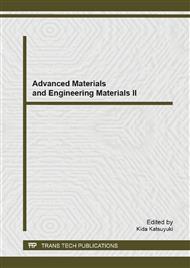p.250
p.254
p.258
p.262
p.266
p.271
p.275
p.280
p.289
Photo Polymerization of Thiol-Hyperbranched Polysilazanes
Abstract:
The kinetics of UV curable thiol-hyperbranched polysilazanes (HBP) was studied by differential photo-scanning calorimeter (DPC) technology. The effects of photo initiator concentration [I], light intensity I0 and temperature on the UV curing rate and the final unsaturated double bond conversion of thiol-HBP were investigated. The results indicate that the dependence of polymerization rate Rp on [I] and I0, respectively, was found to fit with theoretical predictions very well at [I] no more than 0.50wt% and I0 lower than 19.40mW/cm2. The kinetic parameters were calculated by autocatalytic model, and correspondingly, the total apparent reaction exponent and apparent activation energy are 8.76 and 13.97kJ/mol, respectively.
Info:
Periodical:
Pages:
266-270
Citation:
Online since:
April 2013
Authors:
Keywords:
Price:
Сopyright:
© 2013 Trans Tech Publications Ltd. All Rights Reserved
Share:
Citation:


